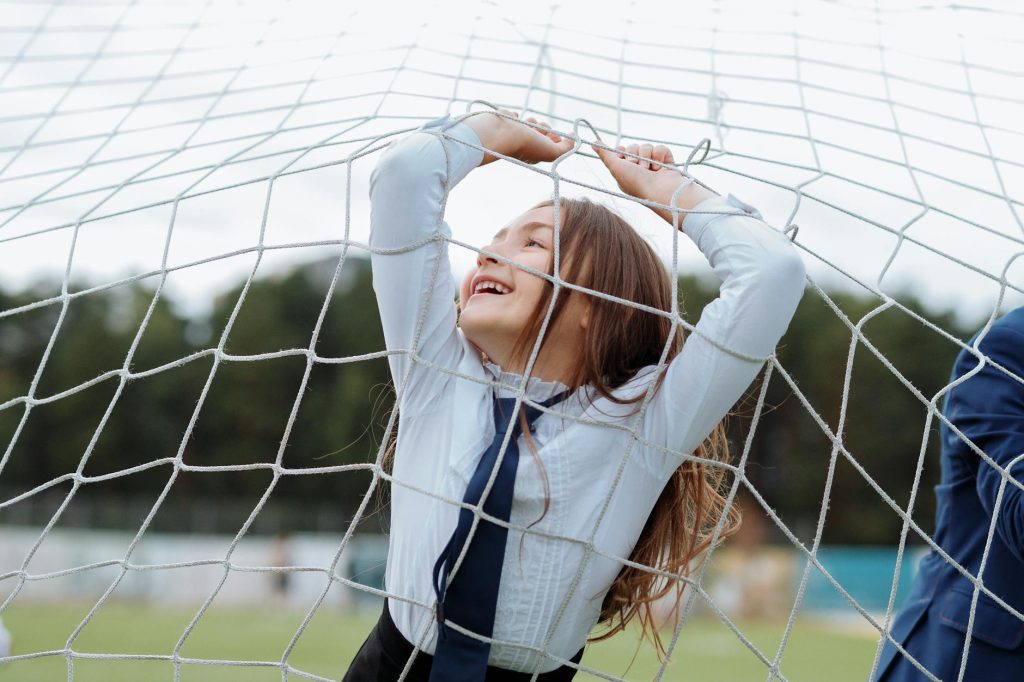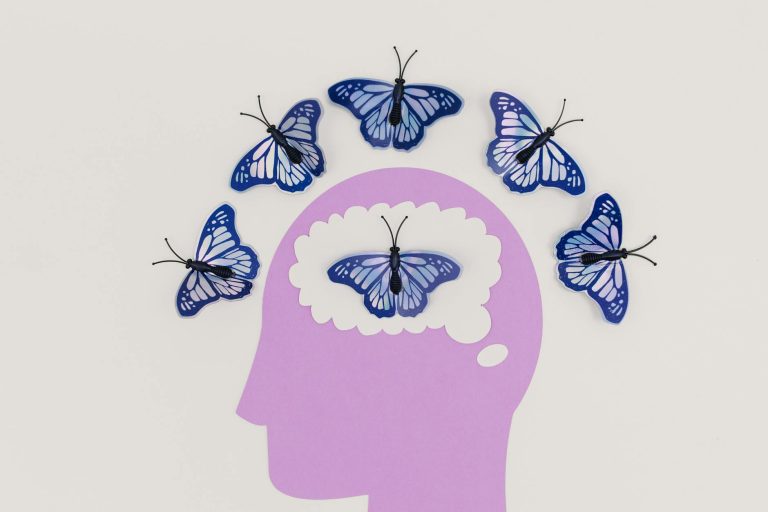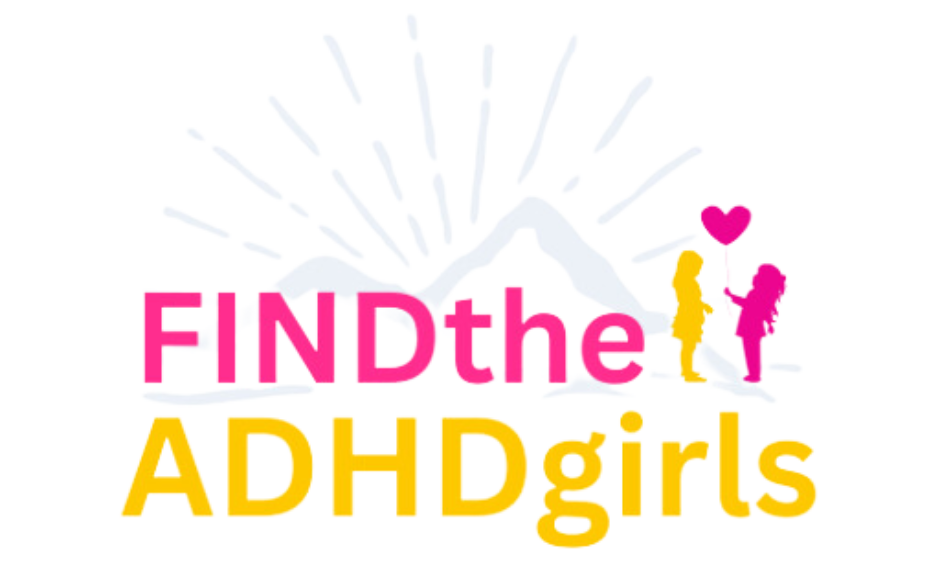Hyperactive/impulsive ADHD in girls
Hyperactivity in girls may look very different from what we think about in boys…it could be hyperverbalization, excitability, or reactivity—this could be their version of hyperactivity.
~Mary Anne Richey, ADHD writer, school psychologist
The majority of girls with ADHD have the inattentive type, and the symptoms are subtle and easily overlooked. Things like daydreaming, forgetfulness, and trouble focusing. In fact, almost all ADHD girls have inattentive symptoms. But some girls have a combination type ADHD with signs of hyperactivity and impulsivity. This presentation is less common, but it’s still significant and just as likely to be overlooked or dismissed. This blog will focus on hyperactive/impulsive ADHD symptoms in girls to help you key in on those behaviors. But keep in mind that hyperactive and impulsive ADHD girls will likely show symptoms of inattention, too.
Reasons ADHD is missed in girls
Social expectations and gender norms
Social expectations are a big reason ADHD is missed in young girls. Girls are supposed to be demure, polite, obedient, and eager to please adults.They’re afraid to disappoint people. This is easier for girls with inattentive ADHD; gazing out the window isn’t disruptive. Their struggle is more internal. But girls with hyperactive/impulsive ADHD are often expressive, loud, and fidgety by nature. As she accumulates the disapproving looks and reprimands from others, she tries harder to hide her external symptoms. She tries to become smaller and less exuberant. The pressure on her to conform is immense, and she struggles to meet those expectations. The more she hides her symptoms, the harder it is to identify them.
Personality Quirks
Additionally, the outward symptoms of ADHD in girls are often dismissed as she’s just energetic or chatty! Or the symptoms are wrongly attributed to her personality. People see these girls as quirky, social butterflies, spirited, or dramatic rather than having problems. You may see her that way, too. But extroversion and hyperactive/impulsive ADHD are not the same thing. When these symptoms negatively affect her life, it’s time to look beyond her personality. It could be a sign of ADHD.
Signs of physical ADHD hyperactivity in girls
“I was doing ballet four days a week, walking miles to school, cycling every night. I never stopped. Looking back now, I think, ‘Of course I have ADHD.’”
~Kathleen Sanders, ADHD parent coach
Self-stimulatory behaviors
The standard picture of ADHD is a young boy who is climbing the walls. While that’s how it often presents in boys, it’s not a complete picture. Physical hyperactivity in ADHD isn’t just running and jumping. ADHD brains are constantly seeking input and stimulation. Or alternatively, they’re trying to regulate themselves after too much input and stimulation! ADHD children may express self-stimulatory behaviors, aka “stimming.”. These are repetitive behaviors that can help ADHD children to self-soothe and regulate their environment.
For example, lights, noises, or a busy environment can be overstimulating with ADHD. So can strong emotions such as excitement or anger. Your daughter may be stimming to block out excess sensory information or to control her emotions. It can help her process what she’s experiencing and reduce overwhelming feelings.
Similarly, stimming can help combat boredom. If your daughter is under-stimulated or bored, stimming may help her focus. For example, swinging her legs and tapping her pencil during math class.

Examples of stimming:
Visual: doodling, blinking in rapid succession, staring at objects, turning lights on and off
Vocal: mimicking sounds in the environment, repeating words, humming, whistling
Tactile: fidgeting with objects, tapping her fingers, twirling her hair, scratching or picking her skin
Physical: waving her hands, bouncing on her heels, shaking her legs, twirling
She could be a wiggler, squirm in her chair like she’s got a tack in her bum, or impulsively hop out of her seat. She struggles to sit for a long time! She’s not trying to be disruptive or annoying; her brain is going a million miles a minute. Even during quiet activities, she has difficulty calming down and staying still.
I wasn’t a bad kid, but I was an annoyance to the teachers, like always chatting, getting distracted, or swinging on my chair.
~Georgia, pseudonym (ADHD survey participant)
Although these signs are not always as obvious or disruptive as a boy climbing the walls, these can be indicators that your daughter is struggling to pay attention. Unfortunately, these behaviors may be dismissed as normal if she isn’t disturbing the classroom.
Impulsive ADHD Behaviors: Acting Before Thinking
“I didn’t realize it was happening or the moments that I was missing connection because my brain was running at 10,000 miles per hour.”
~ Arianna White, counselor for ADHD students
You can think of ADHD impulsivity as a faulty “pause” button. Before your daughter thinks something through, she’s doing it! She doesn’t slow down before jumping into the next thing. She’s like a perpetual motion machine! This impulsivity puts her at increased risk for accidental injury and can also damage her relationships with others. Let’s take a look.

Risky Behavior
Your daughter may struggle to remember basic safety rules. For example, she may forget to wear a helmet when riding her bike or not look both ways before crossing the street. Or she may jump off the top of the monkey bars or other playground equipment before realizing she could get hurt.
Difficulty taking turns
Her impulsivity makes it hard to wait! Girls with ADHD struggle with delayed gratification, and they may push their way ahead in line or get frustrated or impatient with other children. In other words, she wants what she wants when she wants it! She’s more likely to speak out of turn or dash ahead to do something when she is supposed to wait.
Taking things from others
Your daughter may take toys, snacks, or books from kids without asking. She doesn’t think of this as stealing; she just doesn’t think! It doesn’t occur to her that she is infringing on another person’s possessions, and they’ll be rightfully upset. Similarly, she may borrow things from others on impulse and forget to return them, or she may forget she has them!
A common phrase I heard around my house after my ADHD son took a toy from his older brother’s room without asking was, “I assumed he wouldn’t care.”
~Cynthia Hammer, social worker, ADHD author, mother
Invading Personal Space
Your daughter has trouble understanding socially acceptable behaviors and boundaries. She might stand too close to people or randomly hug them. She doesn’t recognize when she is intruding on someone and making them uncomfortable. Social nuance and subtlety aren’t her forte! She misreads social cues and doesn’t evaluate situations before rushing in. Then, she feels hurt and rejected when her intrusion is unwelcome.
“I wanted to be everyone’s friend and didn’t understand the social norms that you can’t be everybody’s friend. I thought that was normal. But in school, I think people are like, well, no, this our clique, don’t impose. And it led to a bit of self-sabotage and self-esteem stuff.”
~ Jessica, pseudonym, (ADHD survey participant)
Emotional Impulsivity: BIG Feelings, BIG Reactions
“I was too much: too loud, too expressive, too messy, too many questions, too weird, too…everything.”
~Angie Mack, ADHD creative
ADHD girls have difficulty with self-control and emotional regulation and feel things incredibly intensely. While girls with inattentive ADHD are more likely to turn their feelings inward, hyperactive and impulsive girls’ feelings often explode outward. She has BIG EMOTIONS.
Examples:
- Your daughter doesn’t get the favor she wanted at a birthday party. It ruins her whole day, and she spends the rest of the time sulking in the corner.
- A gentle reminder to your daughter to look both ways before crossing the street results in her exploding, “I KNOW THAT!!”
- Making a simple mistake on her homework leads to a complete meltdown as she cries that she is stupid and rips it up.
- If she loses a board game, she might flip the board, fling game pieces, say hurtful things, or refuse to play anymore.
Emotional Outbursts
Your daughter often cries or melts down over little things. For example, your daughter may overreact to things that aren’t a big deal, such as a minor change in plans. Or explode into fits of anger, frustration, or excitement, seemingly at a moment’s notice. However, your daughter may already be functioning at the top of her capabilities. One extra stressor can be enough to push her past her limits.
“When things are a bit more stressful, I think that’s where I’ve been more susceptible to snap. I’m feeling those emotions quite intensely, and I feel like they are hard for people to understand, too.”
~Jessica, pseudonym, (ADHD survey participant)
Struggling to calm down
Your daughter takes a long time to calm down after an emotional episode. It doesn’t matter what the cause is or how trivial it seems. She feels it deeply and struggles to self-soothe and regulate her feelings. It takes a lot out of her, and the effects may linger for a while. She’ll be exhausted, and may have physical symptoms such as a headache or tummy ache.
Behaviors you may see after an outburst:
- Remorse: may apologize or show regret
- Retreat: she might isolate herself and refuse to play
- Comfort seeking: holding her favorite blanket or stuffed animal
- Tactile stimming: fidgeting, tapping, twirling her hair
- Physical movement: pacing or gentle rocking

Overly sensitive to criticism
She takes feedback to heart and is crushed by even minor corrections. She also feels rejection intensely. Of course, no one likes to feel rejected, but her reaction is BIG. It doesn’t matter if the rejection is real or perceived; it devastates her. You may hear this reaction called rejection sensitivity dysphoria, or RSD. Although RSD isn’t an actual medical diagnosis, it’s a common occurrence among girls with ADHD.
“As a teenager, I really, really struggled. I had eating disorders, and I struggled with self-harm. There was just so much emotion, and I didn’t know why there was so much emotion, and I didn’t know what to do with it. “
~Georgia, pseudonym, (ADHD survey participant)
All-or-nothing thinking
Girls with ADHD often have rigid or all-or-nothing thinking. They struggle to see nuance and shades of gray in situations. For example, a minor disagreement can cause a friendship to end explosively. She is also prone to catastrophizing and thought distortions. She functions in extremes and uses words like always, never—i.e., “I always mess up; I never do anything right.” This black-and-white way of looking at things can make situations hard to navigate, leading to social missteps and emotional blow-ups.
“I used to be pen pals with my cousin, and I kind of wanted to stop, so I sent her all the letters back, and she cried. I never saw that I did something wrong. And later on, we were talking about it, and she was like, ‘I don’t think you realize how badly I was hurt over that.’ But I just thought that’s what you do, send all the letters back.”
~Chloe, pseudonym, (ADHD survey participant)
Communication problems
Girls with ADHD have trouble expressing themselves clearly and getting their point across. Even with plenty of ideas and a large vocabulary, your daughter struggles to convey her thoughts effectively. This is because ADHD brains are structured and wired differently, with deficits in executive functioning, such as impulse control and working memory. These abilities play a large role in communication, and these impairments show up in how ADHD kids speak and relate to others.
Pragmatic Communication
Studies show that communication is negatively affected in 35 to 50% of children with ADHD. Girls with hyperactive/impulsive ADHD often have several symptoms of language deficits: talking too much, saying inappropriate things, topic jumping, etc. Altogether, these symptoms mean she has trouble with pragmatic communication. Simply put, pragmatic communication is knowing what to say, when to say it, and how to say it. It’s abiding by unspoken social rules, such as taking turns speaking and not saying too much. Let’s look a little more closely at what you may see in girls with hyperactive/impulsive ADHD.
Excessive talking:
Your daughter talks constantly—even when she should be listening. She often talks over other people or interrupts them without thinking. She may interrupt herself when she’s excited! Even when she’s by herself, you might hear her humming or quietly chattering to herself or her toys. Somehow, your daughter always seems busy. Even when she’s engaged in quiet activities, you can almost see her mind going a million miles a minute.
Unfiltered Speech
Your daughter blurts out thoughts out of turn or answers questions before they’re fully asked. She often overshares and gives out personal details or inappropriate information without considering the consequences. She also may say audacious things without realizing they might be rude or thinking how her words could affect others.
Topic Jumping
She’ll switch topics without warning and often during mid-conversation. Especially when she’s excited. She gets upset or frustrated frequently because people can’t follow her train of thought. But sometimes, she can’t even follow her own train of thought. She may lose track of the point of her story or forget what she wanted to say.

Rapid Speech
It may seem like your daughter talks fast, but to her, it likely feels like she is speaking normally. She is struggling to keep up with her ideas. Her hyperactive brain is like a pinball machine in multi-ball mode, and she’s frantically getting those thoughts out of her head.
“I think that there was compensatory anxiety about wanting to get all of my thoughts out all at once. I do tend to talk in long paragraphs because there’s this pressured urgency that if I don’t get the idea out, I’ll forget.”
~Irena Smith, ADHD writer, college admissions counselor
ADHD social symptoms
Girls especially crave and thrive on social interactions. However, ADHD girls are at high risk of not forming or maintaining friendships.
Rejection and isolation
Inattentive ADHD girls are frequently socially neglected, while hyperactive/impulsive girls are actively rejected. That makes sense. Accidental rudeness alienates her from others when she constantly interrupts or talks over her classmates. Other kids may see her as bossy or pushy and interpret her behavior as uncaring or selfish.
But, even when your daughter is a social butterfly and makes friends easily, she may struggle to keep them. Any misunderstanding with her friends could push her over the edge emotionally. She may react with anger or frustration, and outbursts can get her labeled as a “drama queen” or “too much.” Eventually, her peers may get frustrated and exclude her. Your daughter is told she is too much but doesn’t feel like she’s enough. You may see her apologizing for herself and the way she is when she feels she’s unacceptable to others.
“I found I believed the people had to put up with me rather than enjoying my company and I had to apologize for things that I shouldn’t have and didn’t need to.”
~Hannah, pseudonym, (ADHD survey participant)
Hyperfocus
It’s a myth that girls with ADHD can’t pay attention. They absolutely can. However, ADHD brains are interest-driven, so the task or subject has to light up their brain. Your daughter isn’t trying to be difficult; her brain is wired for stimulating, novel activities. So, if something seems boring or tedious, she will struggle to do it.
On the other hand, if she’s excited about something, she’ll have a hard time pulling herself away. She focuses on what she is doing to the detriment of all else. This is called hyperfocus, and you see it when she buckles down to work on something that sparks her interest.
“Kids with ADHD can hyperfocus on things that they’re really interested in. But things that are boring to them are extremely difficult for them to marshal their attention.”
~Mary Ann Richey, ADHD writer, school psychologist
ADHD academic indicators
ADHD symptoms impact how well a girl does in school. You may not see it because girls try their best to hide their struggles. However, academic underachievement and low self-esteem are common with ADHD.
Underachievement
She’s not living up to her potential.

If there was one phrase that encapsulated the experience of ADHD girls in school, it’d be this. “Potential” can feel like a four-letter word when you have ADHD. Because, more often than not, girls with ADHD struggle with school. This doesn’t necessarily refer to grades. They can get good grades and still face other challenges. Watch for a disconnect between her potential and performance.
“I worked very hard to be a B student… but my potential was much higher. If I didn’t lose homework, get confused about assignments, or get bored, I could have done much better.”
~Vickie Lind, ADHD and career counselor
Academic underperformance is frustrating and stressful for these girls. They know they are smart, so why aren’t they doing better? She’s already functioning as well as she can, but she feels that it’s not enough. Sometimes, this frustration doesn’t show up in school but at home. After working hard all day to keep herself together at school, she may drop her guard and let her emotions come flooding out when she gets home. She may yell, cry, slam doors, or say hurtful things.
You might feel you’re not a good parent, especially if she behaves well at school. On the contrary, you’re not a bad parent; she feels safe with you. It’s difficult that it can come out sideways with anger and frustration directed at you, but try to take it in stride. She trusts you enough to let her emotions out.
Low self-esteem
Dr. Patricia Quinn is a former developmental pediatrician and ADHD expert. If she asks parents if their daughter has ever called herself stupid, the answer is yes, 100 percent of the time. Girls with ADHD already know something is wrong. Even as young as 7 or 8, they compare themselves to their peers and realize something doesn’t add up. They watch other children easily do things that give them trouble and know they’re struggling where their classmates aren’t.
While boys with ADHD may act out or refuse responsibility for unfinished schoolwork or poor test scores, girls are more likely to turn their frustration inward. Anxiety about school is common among girls with ADHD, as is perfectionism. She’ll stay up late to finish an assignment so she doesn’t disappoint anyone, including herself.
Specific ADHD behaviors to watch for at school:
- Down on herself: saying things like, “I’m so stupid or “I can’t do this.”
- Avoids challenging work: your daughter may refuse to start work that seems boring, hard, or something she doesn’t think she can do perfectly on the first try
- Easily frustrated: she gets upset when she encounters problems or makes small mistakes
- Gives up quickly: she gets overwhelmed and gives up when she faces challenges
- Seems careless: she misses steps or skips questions, forgets to turn in assignments
- Messy and disorganized: her backpack is messy and disorganized, and she has a hard time keeping her area clean
Once you know, you know
“There’s still stigma around girls with ADHD. Parents may feel embarrassed, and society often shames these girls for being too loud or taking up too much space. But ADHD is not a choice. These girls are simply trying to understand themselves and the world around them.”
~Lotta Borg Skoglund
Girls with hyperactive/impulsive ADHD have more visible signs of the disorder than girls with inattentive ADHD. Still, their overt symptoms don’t always fit the classic stereotype; your daughter is more likely to be overly emotional, super talkative, and struggle with social situations. She might not disrupt the classroom to the level of getting a referral like a boy would. Your daughter is more likely to be overly emotional, super talkative, or struggle with social situations. But now you know what to look for. So, if she’s having these issues and you suspect something’s not quite right, it’s time to find out what you’re dealing with. Talk to her pediatrician about an ADHD evaluation today.
Like this post? We think you’ll like ADHD misconceptions and barriers to diagnosis.
Co-Authors
 Alex Alcon
Alex Alcon
Alex Alcon, RN, Freelance nurse content and copywriter, owner of RN2Pen LLC
 Cynthia Hammer, MSW
Cynthia Hammer, MSW
Cynthia Hammer, MSW, is an ADHD advocate helping girls get timely diagnoses. She’s the founder of FINDtheADHDgirls, Executive Director of the Inattentive ADHD Coalition, and author of Living with Inattentive ADHD.
Share via:

